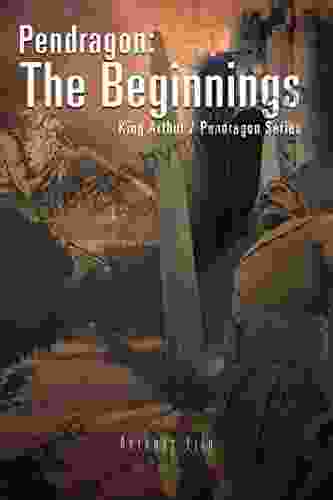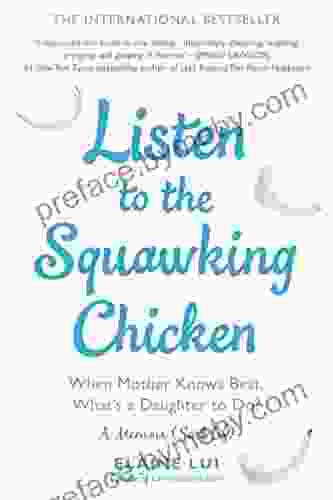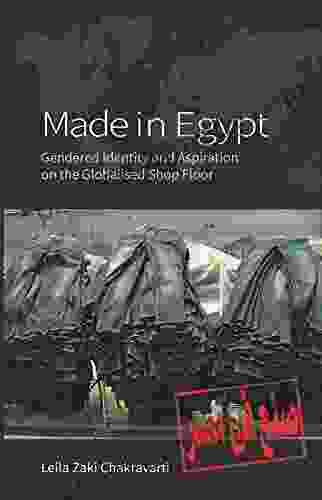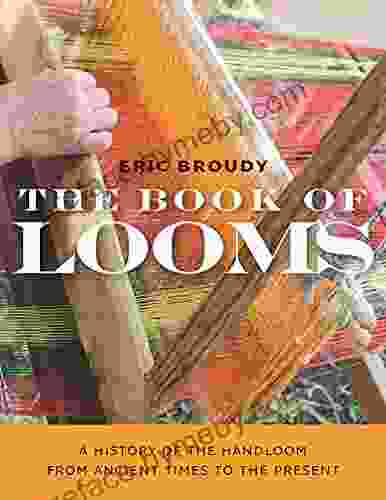History of the Handloom: A Tapestry of Tradition and Innovation

In the realm of textile artistry, the handloom stands as a testament to human creativity and cultural heritage. From the intricate tapestries of ancient Egypt to the vibrant ikats of Southeast Asia, the handloom has played a pivotal role in shaping civilizations and connecting people across bFree Downloads. This article embarks on a captivating journey through the rich history of the handloom, exploring its humble beginnings, technological advancements, and profound impact on societies around the world.
Ancient Origins: The Birth of Weaving
The origins of handloom weaving can be traced back to prehistoric times, when early humans began twisting and interlacing fibers to create fabrics for clothing and shelter. Archaeological discoveries have unearthed remnants of woven textiles dating back to the Neolithic period, suggesting that weaving was a widespread practice among ancient civilizations.
4.5 out of 5
| Language | : | English |
| File size | : | 64546 KB |
| Screen Reader | : | Supported |
| Print length | : | 176 pages |
The ancient Egyptians were renowned for their advanced weaving techniques. They produced exquisite linens, often adorned with intricate designs and hieroglyphics, which were used for clothing, bedding, and funerary purposes. The Egyptians also developed sophisticated looms that allowed them to weave complex fabrics with multiple patterns and colors.
In the East, the ancient Chinese and Indians were equally adept at the art of weaving. Chinese silk production dates back to the Shang Dynasty (1600-1046 BCE),and their intricate brocades and embroideries became highly prized commodities throughout Asia. In India, the ancient Harappan civilization (2600-1900 BCE) produced cotton and wool textiles of exceptional quality, showcasing their mastery of weaving techniques.
Medieval Masterpieces: The Golden Age of Handloom Weaving
During the Middle Ages, handloom weaving reached new heights of artistry and innovation. In Europe, the Gothic period (12th-15th centuries) witnessed the emergence of exquisite tapestries, which adorned the walls of castles and cathedrals. These tapestries, often depicting religious scenes or historical events, were woven with meticulous precision and vibrant colors, showcasing the skill and artistry of medieval weavers.
In the Islamic world, the Umayyad and Abbasid caliphates (7th-13th centuries) were major centers of textile production. Islamic weavers developed new techniques for weaving silk and cotton, creating intricate patterns and textures. Their textiles were highly sought after in Europe, where they were used for clothing, furnishings, and ecclesiastical purposes.
Renaissance and Enlightenment: Technological Advances and Global Exchange
The Renaissance and Enlightenment periods (14th-18th centuries) marked a time of significant technological advancements in handloom weaving. The invention of the flying shuttle in the 18th century allowed weavers to produce fabrics more quickly and efficiently. This technological innovation paved the way for the Industrial Revolution, which would transform the textile industry.
During this period, there was also a surge in global trade and exchange, leading to the dissemination of weaving techniques and designs across continents. European explorers and traders brought new textile technologies and fabrics to the Americas, Asia, and Africa. In turn, they were introduced to indigenous weaving traditions and techniques, further enriching the tapestry of global textile heritage.
Industrial Revolution and Modern Handloom Weaving
The Industrial Revolution (18th-19th centuries) brought about a fundamental shift in the textile industry. The invention of power looms and other mechanized equipment allowed for the mass production of textiles, making them more affordable and accessible. However, the handloom continued to play an important role in the textile industry, particularly in the production of high-quality, handcrafted fabrics.
In the 20th century, there was a renewed interest in handloom weaving as a form of artistic expression. The Arts and Crafts movement sought to revive traditional crafts and promote the handmade over the machine-made. Contemporary artists continue to explore the possibilities of handloom weaving, using innovative techniques and materials to create unique and visually stunning works of art.
Cultural Significance and Global Impact
Throughout history, the handloom has held profound cultural and social significance. Woven textiles have been used to mark important life events, such as births, marriages, and funerals. They have also been used as a form of storytelling, depicting historical events, cultural beliefs, and religious narratives.
Handloom weaving has played a vital role in the economies of many countries. In India, for example, the textile industry is one of the largest employers, and handloom weaving provides livelihoods for millions of people. In Southeast Asia, traditional handwoven fabrics, such as ikats and batiks, are highly valued and continue to be worn as part of cultural attire.
Sustainability and the Future of Handloom Weaving
In recent years, there has been a growing awareness of the environmental and social impact of the textile industry. Handloom weaving, as a traditional craft, offers a more sustainable alternative to mass-produced textiles. Handloom fabrics are typically made from natural fibers, such as cotton, wool, and silk, which are biodegradable and have a lower environmental footprint.
As consumers become more conscious of the ethical and environmental implications of their Free Downloads, there is a growing demand for handcrafted textiles. This has led to a resurgence of interest in handloom weaving, not only as a cultural heritage but also as a sustainable and ethical choice.
The history of the handloom is a testament to the enduring creativity and ingenuity of human beings. From ancient origins to modern applications, the handloom has played a vital role in shaping societies, connecting cultures, and inspiring artistic expression. As we move into the future, the handloom continues to be a symbol of tradition and innovation, offering sustainable and ethical alternatives in the face of a rapidly changing world. Whether as a cultural artifact, a form of artistic expression, or a source of livelihood, the handloom remains an integral thread in the fabric of human history.
4.5 out of 5
| Language | : | English |
| File size | : | 64546 KB |
| Screen Reader | : | Supported |
| Print length | : | 176 pages |
Do you want to contribute by writing guest posts on this blog?
Please contact us and send us a resume of previous articles that you have written.
 Book
Book Novel
Novel Page
Page Chapter
Chapter Text
Text Story
Story Genre
Genre Reader
Reader Library
Library Paperback
Paperback E-book
E-book Magazine
Magazine Newspaper
Newspaper Paragraph
Paragraph Sentence
Sentence Bookmark
Bookmark Shelf
Shelf Glossary
Glossary Bibliography
Bibliography Foreword
Foreword Preface
Preface Synopsis
Synopsis Annotation
Annotation Footnote
Footnote Manuscript
Manuscript Scroll
Scroll Codex
Codex Tome
Tome Bestseller
Bestseller Classics
Classics Library card
Library card Narrative
Narrative Biography
Biography Autobiography
Autobiography Memoir
Memoir Reference
Reference Encyclopedia
Encyclopedia Eleanor Richardson
Eleanor Richardson Emilie Conrad Da Oud
Emilie Conrad Da Oud Massimo Florio
Massimo Florio Ellie Marney
Ellie Marney Eliot Peper
Eliot Peper Jason
Jason J E Gordon
J E Gordon Gerd Gigerenzer
Gerd Gigerenzer Emily Easton
Emily Easton Lejuan James
Lejuan James Ellen Warner
Ellen Warner Juan Antonio Fernandez
Juan Antonio Fernandez Felicity Foster
Felicity Foster Eric Gadus
Eric Gadus Lori Walburg
Lori Walburg John P Kotter
John P Kotter Joel Hasbrouck
Joel Hasbrouck Ellen Javernick
Ellen Javernick Phil Stutz
Phil Stutz Ramsay Burt
Ramsay Burt
Light bulbAdvertise smarter! Our strategic ad space ensures maximum exposure. Reserve your spot today!

 Joseph HellerPendragon: The Beginnings - The Epic Journey that Shaped the Legend of King...
Joseph HellerPendragon: The Beginnings - The Epic Journey that Shaped the Legend of King...
 Jesus MitchellDive into the Timeless Wisdom of Benjamin Franklin: Classic Franklin Stories...
Jesus MitchellDive into the Timeless Wisdom of Benjamin Franklin: Classic Franklin Stories...
 Jonathan FranzenJourney into the Heart-Stirring Memoir: "When Mother Knows Best... What...
Jonathan FranzenJourney into the Heart-Stirring Memoir: "When Mother Knows Best... What... Efrain PowellFollow ·9.1k
Efrain PowellFollow ·9.1k Jamison CoxFollow ·11.2k
Jamison CoxFollow ·11.2k Zachary CoxFollow ·6.4k
Zachary CoxFollow ·6.4k Francis TurnerFollow ·12.3k
Francis TurnerFollow ·12.3k Terence NelsonFollow ·17.8k
Terence NelsonFollow ·17.8k Douglas FosterFollow ·2.9k
Douglas FosterFollow ·2.9k Gil TurnerFollow ·14.8k
Gil TurnerFollow ·14.8k Colton CarterFollow ·6.2k
Colton CarterFollow ·6.2k

 Richard Adams
Richard AdamsGame Development with Rust and WebAssembly: A...
Are you passionate...

 David Baldacci
David BaldacciGendered Identity and Aspiration on the Globalized Shop...
: The Convergence of Gender, Identity, and...

 Natsume Sōseki
Natsume SōsekiFresh Eyes On Panama: A Captivating Exploration of a...
Panama, a country often overshadowed by its...

 Adrian Ward
Adrian WardThe Life and Masterworks of J.M.W. Turner: A Timeless...
The Man Behind the Masterpieces ...
4.5 out of 5
| Language | : | English |
| File size | : | 64546 KB |
| Screen Reader | : | Supported |
| Print length | : | 176 pages |










